Speakers 2025
We are happy to introduce the speakers that will share with us their research and experience in the field of Dental Trauma – An Interdisciplinary Approach at the Symposium & Webinars 2025.
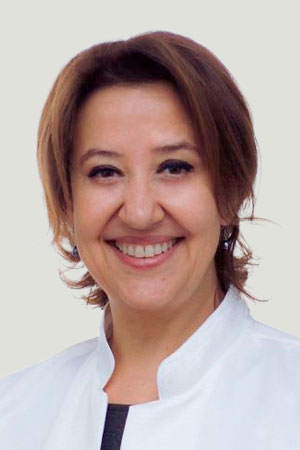 |
Prof. Ece Eden
She graduated from Ege University Faculty of Dentistry in 1988. She obtained her PhD from the Ege University, Health Sciences Pedodontics Doctorate Program in 1995. She became an Associate Professor of Pedodontics in 2000 and a Professor in 2006.
Abstract of lecture: Dental trauma recordings: diagnostic findings and outcomes Dental trauma is a prevalent concern, particularly among children and adolescents, necessitating accurate diagnostic recordings and effective management to ensure optimal outcomes. Through recent research, the impact of accurate diagnosis on treatment decisions and long-term follow-ups is evident. The utilization of the ‘Modified Eden Baysal Dental Trauma Index’ has emerged as a comprehensive tool for categorizing dental trauma based on the type of injury according to Andreasen classification, location of the root fracture, the maturity of the tooth’s apex and accompanying bone fracture with soft tissue injury recordings. This index offers a standardized approach and provides guidance for treatment planning. The significance of recording outcomes in follow-up visits are important showcasing how ongoing assessments contribute to effective treatment modifications and improved patient care. The ‘Eden Dental Trauma Outcome Index’ is a newly proposed index for dental trauma outcomes, which aims to provide this critical information in a standardized manner. This presentation will address the latest advancements in electronic health records and present the strategies to improve patient outcomes after traumatic dental injuries through meticulous diagnostic and follow-up |
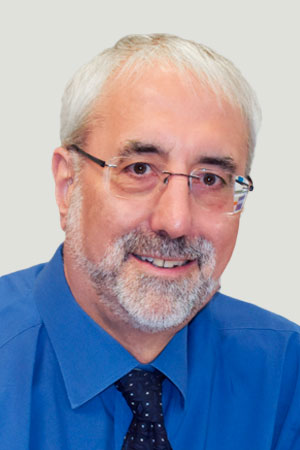 |
Prof. Paul Abbott Paul Abbott is Emeritus Professor of Dentistry at The University of Western Australia. He is a Specialist Endodontist with over 45 years of clinical practice experience. Prior to taking a full-time University position in 2002, he spent 17 years in private specialist endodontic practice and he also held part-time academic positions at The University of Western Australia and the University of Melbourne. He was Dean and Head of the School of Dentistry at The University of Western Australia and Director of the Oral Health Centre of Western Australia from 2003-2009. He has presented over 1000 lectures and courses in 52 countries. He has over 420 publications with 257 articles in refereed journals, 25 textbook chapters and 50 Newsletter articles. From 2015-2022, he was the Editor-in-Chief of the international journal Dental Traumatology. Prof. Abbott’s main research and clinical interests revolve around dental traumatology, tooth resorption, and the diagnosis and management of pulp, root canal and peri-radicular conditions, with particular emphasis on pain control and disinfection of the root canal system. He has won numerous awards for his teaching and service to the dental profession, including the Jens O. Andreasen Award for Lifetime Achievement in Dental Traumatology from the International Association of Dental Traumatology (2024). Prof. Abbott was also appointed by the Governor-General of Australia as an Officer of the Order of Australia in 2015.
Abstract of lecture: Assessment and management of transverse root fractures. Transverse root fractures (commonly called horizontal root fractures) are a complex injury, but they usually require little in the way of invasive or irreversible treatment. Unfortunately, this type of injury appears to be poorly understood by many dentists and this has resulted in many teeth with such fractures being poorly managed in the past. This lecture will specifically discuss this type of injury and how it should be managed. A variation of the classification of root fractures will be explained and this will help dentists in the management of these fractures. The long-term prognosis of sub-crestal coronal third root fractures, middle third root fractures and apical third root fractures is usually very good, if managed appropriately and conservatively. However, supra-crestal coronal third root fractures have a poorer prognosis with respect to the pulp and restoration of the tooth due to the location of the fracture, which is similar to a complicated crown:root fracture. Management of these fractures poses dilemmas for the dentist and some guidelines will be presented to help the decision-making when a supra-crestal coronal third root fracture is present. Tooth Resorption – Classification, Diagnosis and Management Many dentists find it very challenging to differentiate between the different types of tooth resorption, which leads to uncertainty regarding the treatment required. This uncertainty is largely a result of the many conflicting and confusing classifications and terminology used in the literature and in lectures to classify and diagnose tooth resorption. The IADT and the DTG have recently combined to develop a comprehensive, yet simplified, classification of the different types of tooth resorption. This classification will be outlined and each type of resorption will be described to enable easy diagnosis. An outline of the principles of management of each type of resorption will provide clinicians with guidelines to use for their own cases. Examples showing the outcomes of these treatment protocols will also be presented. |
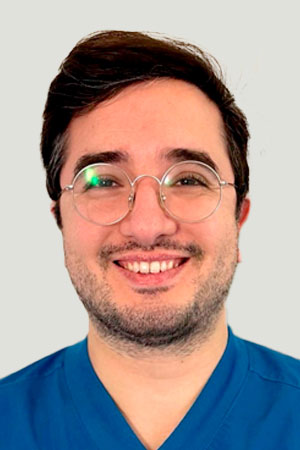 |
Dr. Mir Kevci
Graduated from the Faculty of odontologi at Malmö University, Sweden, in 2017. After several years of clinical experience in both public and private dental care, I transitioned into the field of Oral and Maxillofacial Surgery. My journey began in public dental health in Skåne (2017–2020), followed by a year in private practice. In 2021, I joined the Department of Oral and Maxillofacial Surgery at Malmö University as a clinical assistant, gaining valuable surgical experience before starting my residency in Oral and Maxillofacial Surgery in 2023. Beyond my clinical work, I am actively involved in research, with three peer-reviewed scientific publications to my name. Currently, I am involved in an ongoing research project focused on developing “A non-invasive approach to diagnosing oral cancer”. Abstract of lecture: Alveolar process fractures and root fractures in the primary dentition Traumatic dental injuries in young children pose unique challenges. Root fractures and alveolar process fractures are two rare injuries, which can result in effects on both primary and permanent dentition. This lecture presents findings from two retrospective studies that enhance our understanding of these injuries and their management. In this lecture, these two rare injuries are analyzed from the Copenhagen database. The findings challenge conventional treatment strategies. Should every fractured tooth be extracted, or can some be preserved? Can we predict which cases will impact permanent teeth? This lecture will explore the balance between intervention and observation, equipping clinicians with evidence-based insights to optimize long-term outcomes in paediatric dental trauma. |
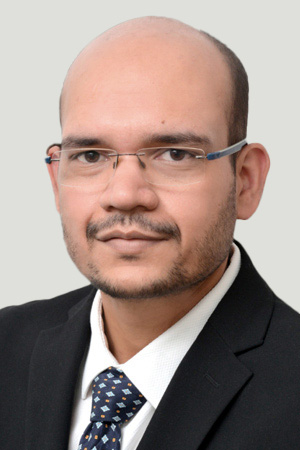 |
Dr. Nitesh Tewari
Dr. Nitesh Tewari has been active in Pediatric Dentistry, Dental Traumatology clinical care and research, and Evidence Based Medicine with 168 publications and seven test-book contributions. These include 42 systematic reviews published in highly-ranked journals in the past four years. He has lectured in over 160 events across several states of India and 17 countries. He has conducted dental traumatology and EBM workshops for post-graduate students, PhD Scholars, and medical/dental faculty in India, Nepal, United States, Japan, and United Kingdom. His works have been awarded by International Association of Dental Traumatology, International Association of Pediatric Dentistry, Craniofacial Research Foundation, International Association of Dental Research, Japan Dental Association, International Federation of Endodontic Associations, Royal College of Surgeons of Glasgow, and several other associations. He is a fellow of six societies and presently serves as the Communication Officer of the International Association of Dental Traumatology, General Secretary of the ISDT, and secretary of the Evidence-based dentistry network of IADR. Abstract of lecture: Late complications of trauma to primary teeth: discoloration, resorptions, and long-term sequelae on permanent teeth Traumatic dental injuries of primary teeth are associated with certain late complications associated with the injured teeth and the developing succedaneous tooth germ. The complications to the primary tooth include discoloration, pulp necrosis, external inflammatory root resorption, replacement resorption, ankylosis, mobility, and tooth loss. The long term sequelae range from yellow discoloration to odontome like malformation. The development of complications is related to the age of the patient, status of the tooth germ, and severity of the injury. The lecture presents the etiopathogenesis of the complications, their manifestations, and treatment approaches. |
 |
Drs. E. Eggink, endodontist
Edwin finished his dental school at ACTA Amsterdam in 1994 and continued with the 3-year post-graduate training in endodontics. Until 2009 Edwin combined a general practice with a referral practice in endodontics. In 2009 he founded EndoRotterdam, a practice strictly limited to endodontics. In the years following a interdisciplinary planning with periodontists, restorative dentists etc., culminated in the esthablishment of Proclin Rotterdam. Abstract of lecture: Autotransplantation: A Viable Option for Patients of All Ages Autotransplantation is a well-established treatment option, particularly in Scandinavian countries. Its success is fundamentally based on the preservation of a vital periodontal ligament, a principle that has been supported by over 50 years of research. This ligament plays a crucial role in ensuring the normal development of surrounding tissues and adapting to the patient’s natural growth. In sharp contrast, dental implants lack these characteristics, making them unsuitable for adolescents, young adults, and adults with a high remodeling rate. Over the past 20 years, the interdisciplinary approach within the referral practice Proclin Rotterdam has demonstrated that teeth with closed apices can achieve comparable healing outcomes to those with open apices. When proper guidelines are followed, the long-term success rates of transplants with closed apices are just as favorable. Key factors for success include optimal endodontic treatment (preferably performed before transplantation), early functional loading, and rigorous infection control. In this lecture, we will dive into the latest guidelines for autotransplantation in complex trauma cases, highlighting the regenerative potential of the periodontal ligament in healing after dental trauma. |
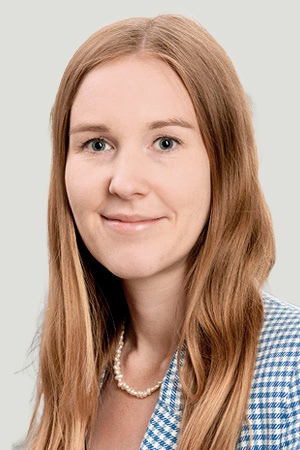 |
Dr. Josephine Solgaard Henriksen
Graduated as DDS from the School of Dentistry, University of Copenhagen in 2000. Josephine has since then been engaged with research at the Dental Trauma Guide research group, Copenhagen University Hospital, Rigshospitalet and University of Copenhagen. Josephine’s special interest is dental traumatology, and since 2022 she has been enrolled as a PhD student at Copenhagen University working on different aspects of dental traumatology such as quality of life/OHRQoL in dental trauma patients, as well as studying the healing potential after lateral luxation injuries. Abstract of lecture: How does dental trauma affect the quality of life? The World Health Organization (WHO) definition of quality of life is “an individual’s perception of their position in life concerning goals, expectations, standards and concerns in the sense of the culture and values in which they reside”. Oral health-related quality of life (OHRQoL) refers to how oral health or disease affects an individual’s everyday life. But does a traumatic dental injury affect the patient’s quality of life? The short answer to this question is yes!
|
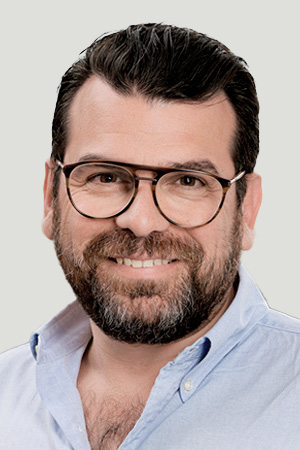 |
Dr. Georgios Tsilingaridis
Dr. Georgios Tsilingaridis graduated at the Karolinska Institute in 1997. In 2004, he completed his pediatric dentistry specialisation at the Eastman Institute in Stockholm, and in 2013 he defended his doctoral dissertation at the Karolinska Institute. He is the author and co-author of several original scientific publications, co-author of Chapters 12, 16 and 17 in the Textbook and Color Atlas of Traumatic Injuries to the Teeth, 5th Edition, and co-author of the recently published IADT trauma guidelines. Abstract of lecture: Putting children first: A child centered treatment approach to manage trauma in the primary dentition Dental trauma in young children is common. This lecture will explore the prevalence, causes, and patterns of primary dentition trauma, equipping dentists with the knowledge to anticipate and manage these cases effectively. We will focus to the acute phase of treatment, providing a structured, evidence-based approach to handling luxations, fractures, and avulsions in primary teeth. Learn to assess injuries quickly, choose the right interventions, and manage pain and anxiety while ensuring the best possible outcomes for both the child and their developing permanent teeth. |
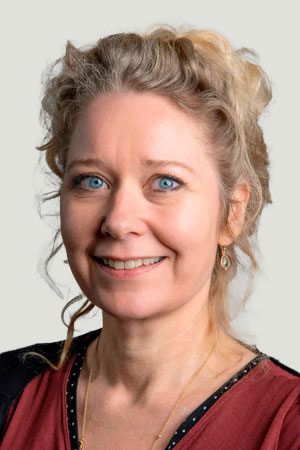 |
Dr. Eva Lauridsen
(DDS, PhD) Abstract of lecture: Dental Trauma Guide – Yesterday, today and tomorrow Dental trauma is complex, as it includes a wide range of different injury types that each requires specific considerations. The Dental Trauma Guide (DTG) project was initiated by Dr Jens Andreasen in 2008 with the intention that all dentists around the world should be able to get access to the best available evidence regarding diagnosis, treatment, and prognosis within a few minutes. The DTG has been a global success, and today 40.000 colleagues visit the DTG web site every year. The website displays the treatment guidelines, developed by the International Association of Dental Traumatology visualized with film animations, to make it easy and appealing for the users. The dentist can connect to the DTG Copenhagen database to compare his/her case with similar cases from the database, giving guidance to the emergency treatment. Furthermore, DTG provides prognosis estimates for each individual injury type, as well as prognosis estimates for teeth with combinations of fracture and luxation injuries. Today, the Dental Trauma Guide is a non-profit organization with the aim of improving the level of care for dental trauma patients worldwide. This presentation will explore the history behind the DTG, where we are today and how we, in the future, can contribute to improved dental care for traumatized patients. |
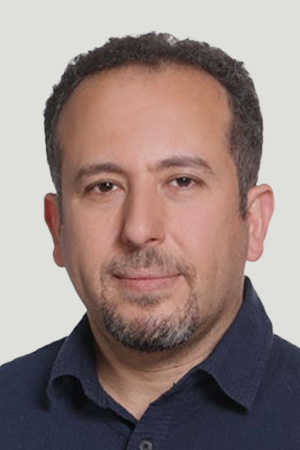 |
Prof. Hani Nazzal
Prof. Hani Nazzal is a Senior Consultant in Paediatric Dentistry at Hamad Medical Corporation and Clinical Professor at Qatar University, where he also serves as the Head of the Department of Clinical Oral Health Sciences (2020-2024). He completed his paediatric dental training at Leeds Dental Institute, UK, and obtained a PhD in Paediatric Dentistry from the University of Leeds. Prof. Hani became a Fellow of the Royal College of Physicians and Surgeons of Glasgow in 2016. With extensive experience in academia and clinical practice, he has published widely, co-authored several book chapters, and presented at national and international conferences. He also serves as Associate Editor for Dental Traumatology and the European Journal of Paediatric Dentistry. Abstract of lecture: Complex Dental Trauma- An interdisciplinary approach Dental trauma, encompassing a wide range of injuries to the teeth, gums, and surrounding structures, requires a comprehensive and collaborative approach to ensure optimal patient outcomes. This lecture will explore the management of complex dental trauma, highlighting the importance of an interdisciplinary approach that integrates various specialties. |
 |
Prof. Lars Andersson
DDS, PhD DrOdont Prof Andersson completed undergraduate and research training at Karolinska Institute in Sweden. Specialist in Oral and Maxillofacial Surgery (OMFS). He defended his doctoral thesis on experimental and clinical studies on replantation of teeth 1988. In the 1990s he chaired a national specialist resident training program in OMFS and belonging to the first-generation implant surgeons he directed international implant training programs for surgeons from all continents of the world. During the same period, he was also regularly consulted to perform implant surgery abroad. During the period 2002-2017, he was appointed Professor of OMFS at Faculty of Dentistry, Kuwait University and Chairman of Department of Surgical Sciences, building up and leading education, research and developing and running a university clinic in OMFS. During all years he was clinically active as an Oral Maxillofacial Surgeon. After returning to Sweden, he is Senior Professor of Oral and Maxillofacial Surgery at Malmö University, Sweden. He is member of the Dental Trauma Guide Competence Centre in Copenhagen (Research based-not for profit-organization). Prof Andersson has published more than 200 original research papers in international Medline indexed scientific journals. His papers have received more than 14000 scientific citations (H-factor 61). Prof Andersson has given more than 200 lectures in more than 40 countries on all continents of the world and has received numerous awards and appreciations for his teaching and service, among them the prestigious IADT-Andreasen Lifetime Achievement Award in Dental Traumatology, Education and Research. He has been editor of five international textbooks and chapter author in several textbooks in the fields of Trauma and OMFS. He was Editor-in-Chief of the Medline indexed scientific journal, Dental Traumatology from 2007-2015 and President of the International Association of Dental Traumatology (IADT) 2011-2014.
Abstract of lecture: When can implants be installed after tooth losses in the anterior region of maxilla in young patients? Implant treatment is today often used to replace lost teeth. However, in the anterior region of the maxilla, implant treatment is not a panacea and there are situations when implant treatment is less suitable such as in growing children, young adults and patients with special growth patterns. The lecture will present situations when implant treatment is less suitable and illustrate and suggest alternative methods with better tissue preservation and outcome. Orthodontic space closure, resin bonded bridges, and autotransplantation may sometimes be better alternatives to choose. An updated clinician of today should be aware of how to assess; when growth is completed, looming risks for implant complications such as infraposition of the implant, risk of loss of buccal bone, peri-implantitis and be aware of alternative methods for the best planning and outcome in the young growing patient. |
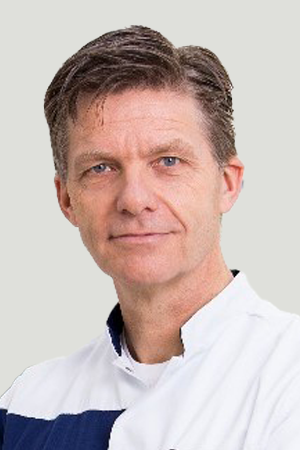 |
Dr. D.S. Barendregt DDS, MSc, PhDDr. D.S. Barendregt DDS, MSc, PhDDick Barendregt finished dental school in 1988 at the University of Groningen. In 1991 he started his Master of Science training in periodontology at the University of Amsterdam. After finishing his training in 1994 he worked as periodontist in 2 referral clinics restricted to periodontology. In 1996 he founded his own clinic in Rotterdam. In his clinic he works as a specialist in periodontology and implantology. The last 20 years the emphasis in patient treatment has been on the interdisciplinary planning (Proclin Rotterdam) together with endodontists, orthodontists, restorative dentists, dental technicians and fellow periodontists. Dick Barendregt received on November 4th 2009 his PhD degree on his thesis “Probing around teeth” and was appointed on July 1st 2019 as Adjunct Professor at the Department Periodontology, Adams School of Dentistry at the University of North Carolina. He is author and co-author of several articles and chapters on dental traumatology and autotransplantation. From Oktober 2024 he is member of the Editorial Board of Wiley’s Dental Traumatology. Abstract of lecture: Autotransplantation: A Viable Option for Patients of All Ages Autotransplantation is a well-established treatment option, particularly in Scandinavian countries. Its success is fundamentally based on the preservation of a vital periodontal ligament, a principle that has been supported by over 50 years of research. This ligament plays a crucial role in ensuring the normal development of surrounding tissues and adapting to the patient’s natural growth. In sharp contrast, dental implants lack these characteristics, making them unsuitable for adolescents, young adults, and adults with a high remodeling rate. Over the past 20 years, the interdisciplinary approach within the referral practice Proclin Rotterdam has demonstrated that teeth with closed apices can achieve comparable healing outcomes to those with open apices. When proper guidelines are followed, the long-term success rates of transplants with closed apices are just as favorable. Key factors for success include optimal endodontic treatment (preferably performed before transplantation), early functional loading, and rigorous infection control. In this lecture, we will delve into the latest guidelines for autotransplantation in complex trauma cases, highlighting the regenerative potential of the periodontal ligament in healing after dental trauma. |
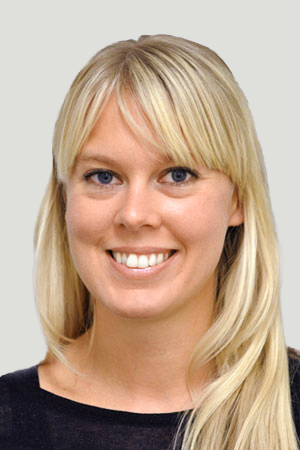 |
Dr. Therese Kvist Senior Lecturer Paediatric Dentistry Therese Kvist is a senior lecturer in Paediatric Dentistry and specialist in paediatric dentistry at the Dental School, Perth, University of Western Australia. Her research focus on oral health related to family domestic violence, forensic aspects of child abuse, prevention of early childhood caries, and addressing dental fear and anxiety in children. She continously work to increase awareness among dental professionals and dental students, enabling them to identify and effectively respond to family domestic violence and child abuse. Abstract of lecture: Seeing the unseen: how to address child abuse in dentistry Dental professionals are crucial in identifying and addressing child abuse. While some severe trauma may be obvious, children may exhibit subtle clinical signs that are easily missed. Dental injuries, bruising, signs of various forms of neglect, and behavioural signs can all indicate potential abuse. It’s essential for dental professionals to master communication strategies that explore social determinants, document concerns accurately, and navigate mandatory reporting requirements with both confidence and care. By doing so, they can effectively “see the unseen” and take proactive steps in safeguarding children and vulnerable patients. |
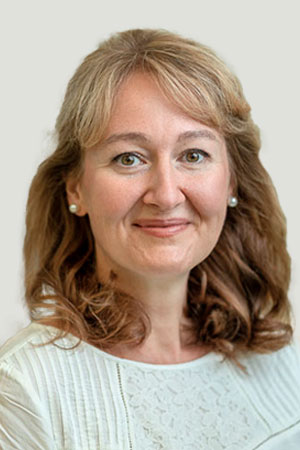 |
Dr. Alina Wikström
DDS and PhD, senior consultant in endodontics at Eastman Institute in Stockholm, Sweden and affiliated to Karolinska Institute in Stockholm, Sweden. I completed my post graduate training in endodontics at Karolinska Institute 2016. Since then, I have been employed at the Department of Endodontics at Eastman Institute, Public Dental Health Services in Stockholm as senior consultant. Abstract of lecture: Regenerative endodontics and apexification techniques in traumatized immature necrotic permanent teeth The subject of this lecture is to discuss and give guidance on the endodontic treatment options available for traumatized immature permanent teeth with pulp necrosis and apical periodontitis. |
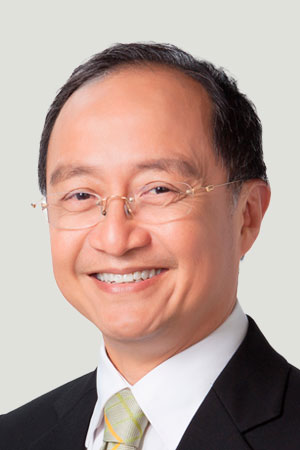 |
Prof. Hien Ngo
Professor Hien Chi Ngo is a distinguished dental professional with extensive expertise in clinical practice, research, and education. Throughout his career, he has actively treated advanced cases of caries and erosion while focusing his research on dental materials and cariology. His work emphasizes the clinical management of caries in elderly and medically compromised patients, as well as the interactions between glass-ionomers, the oral environment, and silver diamine fluoride. Abstract of lecture: Advancing in dental stabilization after trauma Abstract: This presentation will explore the latest advancements in the stabilization of traumatized teeth, emphasizing the next evolutionary steps in recommendations for splinting techniques. As the dental landscape evolves, it is crucial that our management strategies for dental trauma adapt accordingly, particularly concerning splinting methods and materials. Key factors driving these changes include regulatory shifts, technological innovations, and evolving procedural techniques that significantly impact clinical practice. There is a movement toward national regulatory oversight of materials utilized for patient care, prompting a re-evaluation of the materials and techniques employed in splinting traumatized teeth to ensure alignment with current standards. Recent technological innovations means also an urgent need to investigate alternative materials and methodologies that enhance clinical adaptability. Traditional splinting fibers have long been foundational in trauma management; however, advancements in pre-impregnated fibers have improved predictability and ease of application. Moreover, the emergence of injectable composite resins has facilitated the development of the Passive Placement Technique (PPT), which enhances treatment protocols for both the emergency and restorative phases of managing traumatized teeth. Effective splinting must be tailored to the specific nature of the tissue injury. For instance, cervical third root fractures necessitate longer and more stable splinting to promote both soft and hard tissue healing, while injuries to the periodontal ligaments requires flexible short-term splinting.
Abstract of lecture: Recent advances in dental materials for restoration of traumatized teeth Abstract: Dental trauma poses significant challenges in restoring both function and aesthetics, necessitating continuous innovation in restorative materials and techniques. This lecture will delve into the latest advancements focusing on the aesthetic and functional restoration of traumatized teeth. The session will commence by exploring the cutting-edge developments in composite resins, emphasizing improvements in physical properties and aesthetics. We will highlight the impact of nano-particle technology on enhancing wear resistance and longevity, paving the way for more durable and lifelike restorations. Particularly noteworthy is the emergence of injectable composite resins and flowable resin with short fibres, which facilitate Passive Placement Techniques. Additionally, we will examine the integration of modified glass ionomers with the Glass Hybrid Technology that offer exceptional adhesion and controlled release of fluoride and strontium, contributing to the long-term health of traumatized teeth. The importance of minimally invasive techniques will be emphasized, demonstrating how they can effectively manage injuries while preserving tooth structure. Finally, the lecture will showcase the role of digital technologies, including 3D scanning and printing, in creating personalized and precise restorations. Attendees will gain a comprehensive understanding of how these recent advancements can be effectively integrated into clinical practice to enhance outcomes in the management of dental trauma
|
